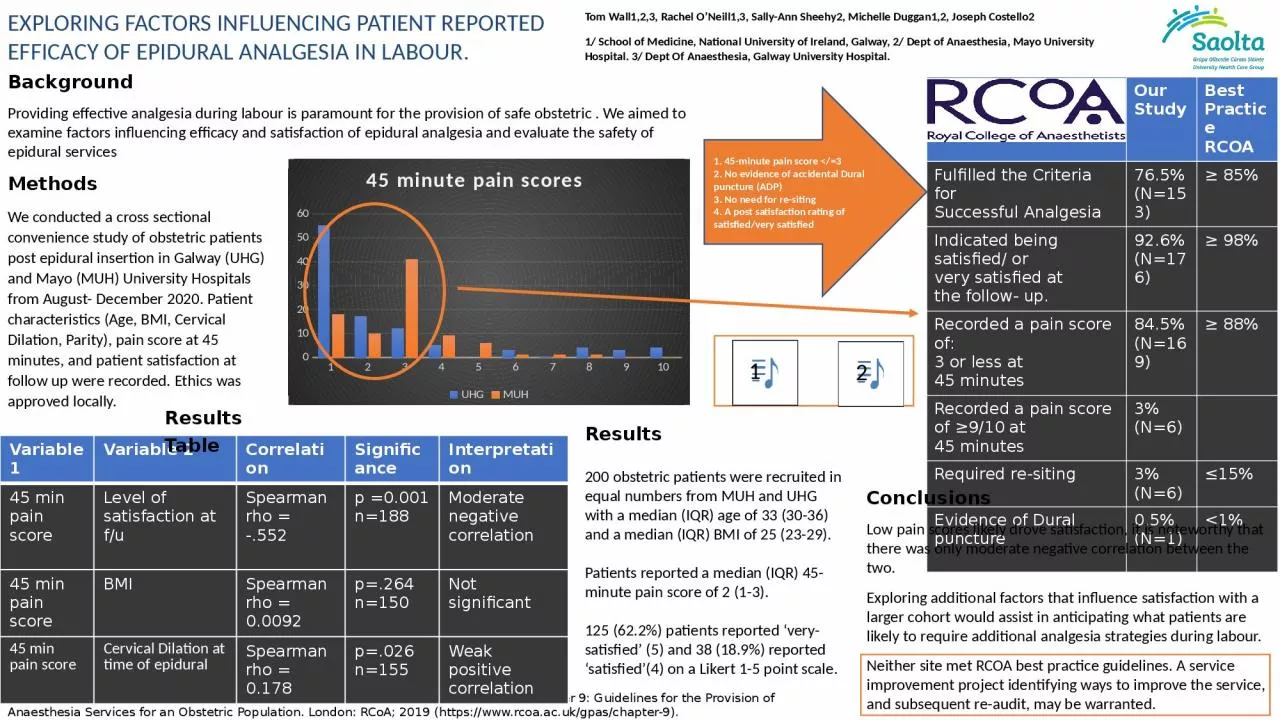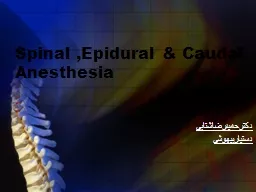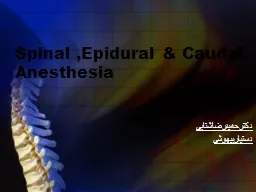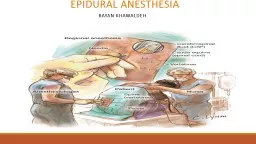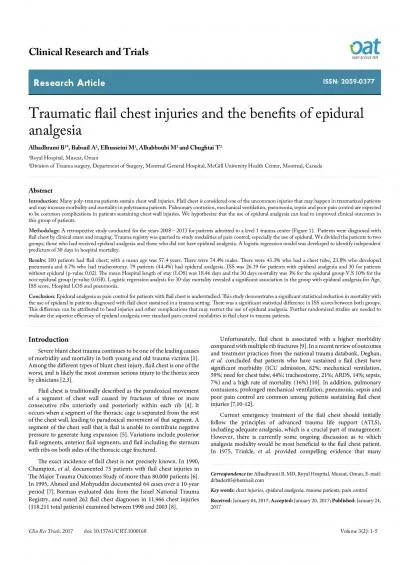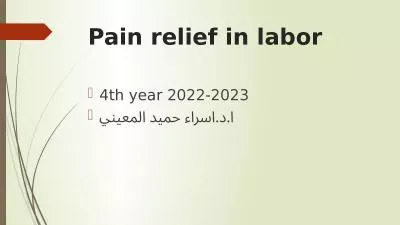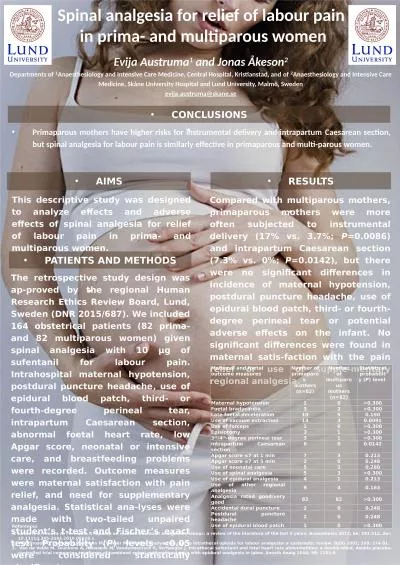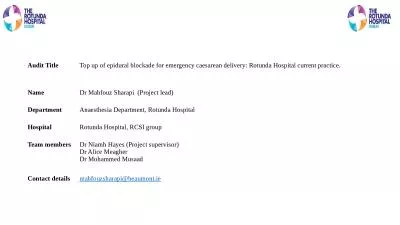PPT-EXPLORING FACTORS INFLUENCING PATIENT REPORTED EFFICACY OF EPIDURAL ANALGESIA IN LABOUR.
Author : riley | Published Date : 2024-02-16
Background Providing effective analgesia during labour is paramount for the provision of safe obstetric We aimed to examine factors influencing efficacy and satisfaction
Presentation Embed Code
Download Presentation
Download Presentation The PPT/PDF document "EXPLORING FACTORS INFLUENCING PATIENT RE..." is the property of its rightful owner. Permission is granted to download and print the materials on this website for personal, non-commercial use only, and to display it on your personal computer provided you do not modify the materials and that you retain all copyright notices contained in the materials. By downloading content from our website, you accept the terms of this agreement.
EXPLORING FACTORS INFLUENCING PATIENT REPORTED EFFICACY OF EPIDURAL ANALGESIA IN LABOUR.: Transcript
Download Rules Of Document
"EXPLORING FACTORS INFLUENCING PATIENT REPORTED EFFICACY OF EPIDURAL ANALGESIA IN LABOUR."The content belongs to its owner. You may download and print it for personal use, without modification, and keep all copyright notices. By downloading, you agree to these terms.
Related Documents

